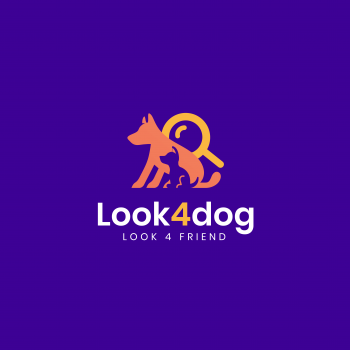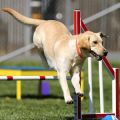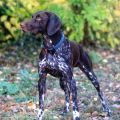The East Siberian Laika is a remarkable dog breed that hails from the vast and rugged region of East Siberia. Known for its exceptional hunting abilities and adaptability to extreme weather conditions, this breed has become a beloved companion and working dog for many in the region. With a rich history and unique characteristics, the East Siberian Laika has captivated the hearts of dog enthusiasts worldwide.
The East Siberian Laika belongs to the Spitz and primitive type group according to the FCI (Fédération Cynologique Internationale) typology. This group comprises dogs that share common ancestry with ancient breeds and possess distinct physical traits, such as erect ears, a curled tail, and a thick double coat. The breed is also classified under the Nordic Hunting Dogs section, which highlights its exceptional hunting skills and endurance.
The history of the East Siberian Laika dates back centuries, with its origins deeply rooted in the indigenous peoples of Siberia. These dogs were bred by the native tribes, such as the Evenki, Yakuts, and Chukchi, who relied on them for various tasks, including hunting, herding, and pulling sleds. The breed's ability to thrive in the harsh Siberian climate, navigate through dense forests, and track down game made them invaluable companions to these nomadic tribes.
Over time, the East Siberian Laika's reputation spread beyond Siberia, and its popularity grew among hunters and dog enthusiasts. Recognizing the breed's unique qualities, the FCI officially recognized the East Siberian Laika in 1947. Today, the breed is primarily found in Russia and other neighboring countries, where it continues to be cherished for its versatility and loyalty.
In terms of appearance, the East Siberian Laika is a medium-sized dog with a well-muscled body and a strong build. Males typically stand between 21 to 24 inches (53 to 61 cm) at the shoulder, while females are slightly smaller, ranging from 19 to 22 inches (48 to 56 cm). The breed's weight varies between 40 to 60 pounds (18 to 27 kg), with males generally being larger and heavier than females.
One of the most striking features of the East Siberian Laika is its dense double coat, which provides excellent insulation against the cold. The outer coat is straight and coarse, while the undercoat is soft and thick. The breed's coat color can vary, with common shades including black, white, gray, and red. The coat requires regular brushing to maintain its health and prevent matting.
In terms of temperament, the East Siberian Laika is known for its intelligence, independence, and strong hunting instincts. These dogs are highly adaptable and can thrive in various environments, from rural settings to urban households. However, they require an experienced and dedicated owner who can provide them with proper training, socialization, and mental stimulation. Early socialization is crucial to ensure that the East Siberian Laika develops into a well-rounded and well-behaved companion.
As a working breed, the East Siberian Laika excels in hunting and tracking tasks. Their keen sense of smell, agility, and endurance make them excellent hunting partners for small and large game alike. Additionally, they have been used for herding reindeer, pulling sleds, and even serving as search and rescue dogs in some regions. Their versatility and adaptability have made them indispensable to the communities that rely on them.
The average lifespan of the East Siberian Laika ranges from 12 to 15 years, which is relatively long for a medium-sized dog breed. However, like all dogs, they may be prone to certain health issues, including hip dysplasia, eye problems, and allergies. Regular veterinary check-ups, a balanced diet, and regular exercise are essential to ensure their overall well-being.
In conclusion, the East Siberian Laika is a remarkable dog breed with a rich history and exceptional qualities. Their origins as working dogs for the indigenous peoples of Siberia have shaped them into versatile, intelligent, and loyal companions. Whether as hunting partners, sled pullers, or loving family pets, the East Siberian Laika continues to leave an indelible mark on the hearts of those fortunate enough to share their lives with them.
The East Siberian Laika, also known as the Vostotchno-Sibirskaia Laika, is a remarkable breed of dog that hails from the vast and rugged regions of Eastern Siberia. Renowned for their exceptional hunting skills, endurance, and loyalty, these dogs possess a unique character that sets them apart from other breeds.
In terms of temperament, the East Siberian Laika is known to be intelligent, independent, and highly adaptable. They are natural problem solvers and possess a strong sense of curiosity, making them excellent companions for those who enjoy outdoor activities and exploration. However, it is important to note that their independent nature can sometimes lead to stubbornness, so consistent and patient training is crucial.
These dogs are deeply loyal to their families and form strong bonds with their owners. They are known to be affectionate, gentle, and protective, making them excellent family pets. However, their protective instincts can sometimes manifest as wariness towards strangers, so early socialization is essential to ensure they grow up to be well-rounded and friendly dogs.
When it comes to behavior, the East Siberian Laika is highly energetic and requires plenty of physical and mental stimulation. They thrive in environments where they have ample space to run and explore, making them well-suited for rural or suburban settings. Regular exercise, such as long walks, jogs, or engaging in dog sports, is essential to keep them happy and prevent any destructive behaviors that may arise from boredom.
Training an East Siberian Laika requires a firm and consistent approach. These dogs are intelligent and eager to please, but they can also be strong-willed. Positive reinforcement techniques, such as treats, praise, and play, work best with this breed. Harsh or punitive methods should be avoided as they can lead to fear or aggression.
Socialization is crucial for the East Siberian Laika from an early age. Exposing them to various people, animals, and environments will help them develop into well-adjusted adults. Puppy classes, obedience training, and regular outings to parks or dog-friendly areas are excellent ways to ensure they become confident and friendly dogs.
Grooming the East Siberian Laika is relatively low maintenance. Their thick double coat protects them from harsh weather conditions, and regular brushing is sufficient to keep their fur in good condition. However, during shedding seasons, more frequent brushing may be required to manage the excess hair.
In conclusion, the East Siberian Laika is a remarkable breed with a unique character. Their intelligence, independence, loyalty, and adaptability make them excellent companions for active individuals or families. With proper training, socialization, and exercise, these dogs can thrive in various environments and bring immense joy and companionship to their owners.
The East Siberian Laika is a beautiful and intelligent breed of dog that requires specific care to ensure their well-being and happiness. Here are some tips on how to care for these dogs, including what to do and what not to do:
1. Exercise: East Siberian Laikas are active and energetic dogs that require regular exercise to stay healthy. Provide them with daily walks, runs, or playtime in a secure and spacious area. Engaging in activities like hiking or agility training can also help stimulate their minds.
2. Mental Stimulation: These dogs are highly intelligent and need mental stimulation to prevent boredom and destructive behavior. Provide them with puzzle toys, interactive games, and obedience training sessions to keep their minds sharp and engaged.
3. Grooming: East Siberian Laikas have a thick double coat that requires regular grooming. Brush their fur at least once a week to remove loose hair and prevent matting. During shedding seasons, which occur twice a year, increase the frequency of brushing to minimize shedding around the house.
4. Nutrition: Feed your East Siberian Laika a balanced and nutritious diet that suits their age, size, and activity level. Consult with a veterinarian to determine the appropriate amount and type of food to provide. Avoid overfeeding to prevent obesity, which can lead to various health issues.
5. Socialization: Early socialization is crucial for East Siberian Laikas to develop into well-rounded dogs. Expose them to various people, animals, and environments from a young age to help them become confident and friendly. Enroll them in puppy classes or obedience training to enhance their social skills.
6. Health Care: Regular veterinary check-ups are essential to ensure your East Siberian Laika's overall health. Keep up with vaccinations, deworming, and flea/tick prevention treatments. Additionally, schedule dental cleanings and maintain good oral hygiene to prevent dental problems.
7. Climate Considerations: East Siberian Laikas are well-adapted to cold climates, thanks to their thick coats. However, they can also tolerate warmer temperatures if provided with shade, fresh water, and proper ventilation. Avoid leaving them outdoors for extended periods during extreme weather conditions.
8. Avoid Isolation: East Siberian Laikas are social dogs that thrive on human companionship. Avoid leaving them alone for long periods as it can lead to separation anxiety and destructive behavior. If you must be away, provide them with interactive toys or consider a dog sitter or daycare.
9. Positive Reinforcement: Use positive reinforcement techniques, such as treats, praise, and play, to train and reward your East Siberian Laika. Harsh training methods or punishment can lead to fear and aggression, which is not suitable for this breed.
10. Avoid Overexertion: While these dogs are energetic, be cautious not to overexert them, especially during hot weather or intense physical activities. Monitor their breathing and energy levels, and provide them with breaks and water as needed.
Remember, each East Siberian Laika is unique, and their care may vary slightly. Always consult with a veterinarian or breed expert for personalized advice and guidance to ensure the best care for your beloved companion.
The East Siberian Laika, a magnificent breed of dog originating from the vast and rugged regions of East Siberia, possesses a striking and distinctive coat color that adds to its overall allure and charm. The common color of East Siberian Laika dogs is a rich and lustrous combination of various shades of gray, often referred to as "wolf gray" or "silver gray."
The coat of an East Siberian Laika is characterized by a dense double-layered fur, which provides them with excellent protection against the harsh Siberian climate. The outer coat is coarse and straight, while the undercoat is soft and thick, serving as insulation during the frigid winters. This unique combination of fur texture and density contributes to the breed's ability to withstand extreme temperatures.
The predominant color of the East Siberian Laika's coat is a beautiful silver-gray, reminiscent of the ethereal hues found in the Siberian landscape. This coloration is often described as a harmonious blend of light and dark shades of gray, creating a mesmerizing effect that captures the attention of all who behold it. The silver-gray coat is typically seen throughout the body, including the back, sides, and tail.
Within this primary color, variations can be observed, with some individuals displaying a slightly darker or lighter shade of gray. These subtle differences in tone add depth and dimension to the coat, enhancing the overall visual appeal of the East Siberian Laika. The interplay of these different shades creates a captivating and dynamic appearance, further accentuating the breed's natural beauty.
In addition to the silver-gray base color, it is not uncommon to find white markings on the chest, paws, and face of the East Siberian Laika. These white patches provide a striking contrast against the predominant gray, adding a touch of elegance and uniqueness to each individual dog. The distribution and size of these white markings can vary, making each East Siberian Laika truly one-of-a-kind.
The coloration of the East Siberian Laika's coat serves not only as an aesthetic feature but also as a functional adaptation to its environment. The silver-gray hue allows these dogs to blend seamlessly into their natural surroundings, providing them with camouflage during hunting or when traversing the vast Siberian wilderness. This natural camouflage is a testament to the breed's remarkable ability to adapt and thrive in its native habitat.
In conclusion, the common color of East Siberian Laika dogs is a captivating silver-gray, which showcases the breed's beauty and resilience. This unique coat color, with its various shades of gray and occasional white markings, not only adds to the dog's visual appeal but also serves as a functional adaptation to its environment. The East Siberian Laika's coat is a testament to the breed's remarkable adaptability and its ability to thrive in the challenging conditions of East Siberia.
The East Siberian Laika is a robust and hardy breed of dog originating from the vast and harsh regions of East Siberia. Known for their endurance, agility, and versatility, these dogs have been traditionally used for hunting, herding, and sledding. In terms of health, the East Siberian Laika is generally a healthy breed with a strong constitution. However, like all dogs, they are susceptible to certain diseases and require proper care to maintain their overall well-being.
One of the most common health issues seen in East Siberian Laikas is hip dysplasia. This is a genetic condition where the hip joint doesn't develop properly, leading to pain, lameness, and arthritis. Regular exercise, a balanced diet, and maintaining a healthy weight can help reduce the risk of hip dysplasia. Responsible breeders often perform hip evaluations on their breeding dogs to minimize the occurrence of this condition.
Another prevalent health concern in East Siberian Laikas is progressive retinal atrophy (PRA). PRA is a degenerative eye disease that eventually leads to blindness. Regular eye examinations by a veterinary ophthalmologist can help detect PRA early on, allowing for appropriate management and care. It is advisable to avoid breeding dogs with a history of PRA to prevent passing on this condition to future generations.
Like many other dog breeds, East Siberian Laikas can also be prone to allergies. These allergies can manifest as skin irritations, itching, and gastrointestinal issues. Identifying and eliminating potential allergens from their environment, such as certain foods or environmental triggers, can help manage these allergies. In severe cases, veterinary intervention may be necessary to provide relief through medications or specialized diets.
Maintaining good oral hygiene is crucial for the overall health of East Siberian Laikas. Dental diseases, such as periodontal disease and tooth decay, can lead to pain, infection, and even organ damage if left untreated. Regular brushing of their teeth, providing appropriate chew toys, and scheduling professional dental cleanings are essential for preventing dental issues.
To ensure the overall health of East Siberian Laikas, regular veterinary check-ups are vital. These check-ups allow for early detection of any potential health problems and provide an opportunity to discuss preventive measures, such as vaccinations, parasite control, and appropriate nutrition. Additionally, regular exercise, mental stimulation, and a balanced diet tailored to their specific needs are essential for their well-being.
In conclusion, the East Siberian Laika is generally a healthy breed, but they can be prone to certain health issues like hip dysplasia, progressive retinal atrophy, allergies, and dental diseases. Responsible breeding practices, regular veterinary care, proper nutrition, exercise, and maintaining a safe and stimulating environment are crucial for ensuring the health and longevity of these remarkable dogs.
The East Siberian Laika is a remarkable breed of dog known for its endurance, strength, and adaptability to harsh climates. To ensure the health and well-being of these dogs, it is crucial to provide them with a well-balanced and nutritious diet. Proper nutrition plays a vital role in maintaining their energy levels, promoting muscle development, and supporting their overall health.
A balanced diet for an East Siberian Laika should consist of high-quality proteins, healthy fats, carbohydrates, vitamins, and minerals. Proteins are essential for muscle growth and repair, and they can be sourced from lean meats like chicken, turkey, or fish. Including organ meats like liver or heart can also provide additional nutrients. It is important to avoid processed meats or those high in sodium, as they can be detrimental to the dog's health.
Healthy fats, such as those found in fish oil or flaxseed oil, are beneficial for the East Siberian Laika's skin and coat health. They also provide a source of energy and aid in the absorption of fat-soluble vitamins. However, it is important to avoid excessive fat intake, as it can lead to weight gain and related health issues.
Carbohydrates are an important energy source for dogs, and they can be obtained from whole grains like brown rice, oats, or quinoa. These grains provide essential fiber, vitamins, and minerals. It is advisable to avoid grains that are high in gluten, as some dogs may have sensitivities or allergies to them.
Fruits and vegetables are excellent sources of vitamins, minerals, and antioxidants. They can be added to the dog's diet in moderate amounts. Some suitable options include carrots, sweet potatoes, blueberries, and spinach. However, it is important to avoid feeding dogs certain fruits like grapes, raisins, or avocados, as they can be toxic to them.
Feeding schedules for East Siberian Laikas can vary depending on their age, activity level, and overall health. Puppies require more frequent meals, typically three to four times a day, while adult dogs can be fed twice a day. It is important to monitor their weight and adjust the portion sizes accordingly to prevent obesity or malnutrition.
Free-feeding, where food is available at all times, should be avoided as it can lead to overeating and weight gain. Instead, establish a regular feeding routine and remove any uneaten food after 20-30 minutes. This helps to regulate their intake and prevent digestive issues.
Additionally, it is crucial to provide access to fresh and clean water at all times. Hydration is essential for the East Siberian Laika's overall health and proper bodily functions.
Lastly, it is important to avoid feeding dogs of this breed with foods that are toxic to canines. This includes chocolate, caffeine, onions, garlic, alcohol, and artificial sweeteners like xylitol. These substances can be harmful and even fatal to dogs.
In conclusion, providing a well-balanced and nutritious diet is essential for the health and well-being of East Siberian Laika dogs. A diet rich in high-quality proteins, healthy fats, carbohydrates, vitamins, and minerals will support their energy levels, muscle development, and overall health. It is important to avoid certain foods, establish a regular feeding routine, and provide access to fresh water. By following these guidelines, you can ensure that your East Siberian Laika thrives and enjoys a long and healthy life.





